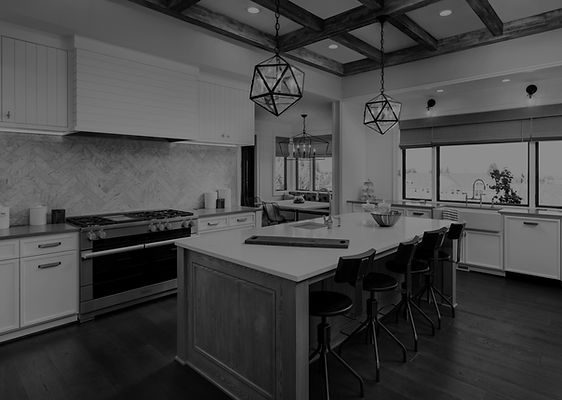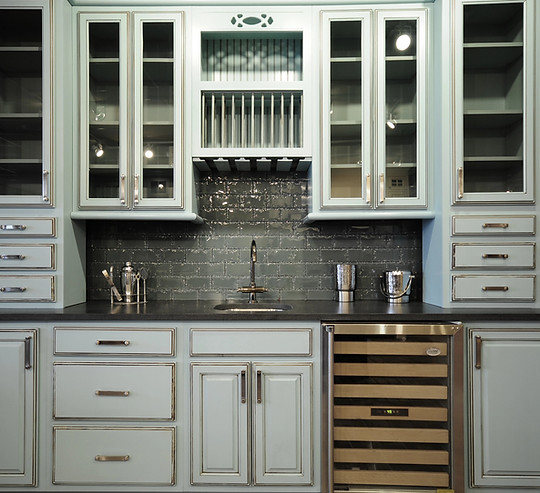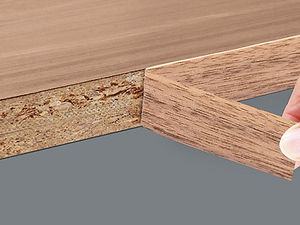
Cabinet Styles and Craftsmanship
In the last topic, we dove into the cabinet box. The part you barely see, tucked away behind the drawers and doors. Now it’s time to move on to the more exciting part: the front of the cabinets. This is what you see every day, the part that defines your kitchen's look, feel, and personality. Whether you’re aiming for a modern, traditional, or farmhouse vibe, your cabinet faces and doors are the stars of the show.
We’re going to focus on three main styles: Face Frame, Inset, and Frameless.

Face Frame Cabinets


Classic Charm with a Modern Twist
Let’s start with Face Frame Cabinets. These are a staple in many American kitchens. Picture a frame attached to the front of the cabinet box, which adds strength and also gives your cabinets a more traditional look.
Now, when it comes to face frame cabinets, there are two types of doors: Partial Overlay and Full Overlay.
Partial Overlay Doors
It’s also called standard overlay
Partial overlay doors are the "vintage" look of kitchen cabinetry. These doors sit on top of the face frame, leaving about 1 to 1.5 inches of the frame visible all around. Back in the day, this space was necessary for the old school hinges that needed extra room to be mounted and swing open.
It’s a charming and it can add a touch of nostalgia to a kitchen. However, this design comes with large gaps between the doors and drawers. basically, it’s more forgiving when it comes to alignment. That’s why you’ll often find partial overlay cabinets in the budget friendly cabinets because the frame doesn’t need to be perfectly level. The gaps cover up any imperfections! While some people love that classic look, most homeowners today want something a little sleeker.


Full Overlay Doors
Full overlay doors, on the other hand, are all about clean lines and a modern look. These doors cover almost the entire face frame, leaving just a tiny gap, about 1/8th to 1/4th of an inch between doors and drawers. That’s right, no room for mistakes here! Every door and drawer has to be perfectly aligned. This is where craftsmanship really comes into play. Achieving that seamless, polished look requires precise measurements and skill. It’s the same level of attention to detail you’ll find in inset cabinets, which we’ll get into in a minute. So If you’re aiming for a kitchen that feels contemporary, elegant, and perfectly put together, full overlay face frame cabinets are the way to go.


Flush inset cabinets:
Precision and Elegance
Flush inset cabinets are like the tailored suit of the cabinet world. They are a standout choice for those who appreciate craftsmanship and attention to detail. In this style, the doors and drawers sit inside the frame, flush with it. This creates a super clean, refined look. Inset cabinets are all about precision because every door needs to fit perfectly inside that frame.
Now, we mostly use concealed modern hinges for this style, which gives a really sleek and seamless look. But if you're going for a more vintage, pottery-barn style, you can choose exposed hinges. While exposed hinges look beautiful, they can feel a little overwhelming if you use them throughout the entire kitchen.
Inset cabinets may require a larger initial investment due to the craftsmanship involved, but this style is timeless and very popular choice for custom kitchens. So if you’re looking for a kitchen style that combines modern aesthetics with traditional craftsmanship, inset cabinets could be the perfect fit for you.

Frameless Cabinets (European Style)
The Minimalist’s Dream

Finally, let’s talk about Frameless Cabinets, also known as European style cabinets. This style skips the face frame entirely, giving you a super sleek, minimalist look. One major advantage is that without a frame, you get to use the maximum width of your cabinet space. That extra bit of storage can make a real difference, especially in smaller kitchens and when the doors are closed, frameless cabinets look almost exactly like full overlay face frame cabinets. You won’t see anything but the doors and drawers from the outside no frame peeking out. And that why this is my favorite style cabinets. I think it’s the best of both worlds.

The downside?
Frameless cabinets on the market typically have thin edge banding on the exposed edges, which can wear down over time and is not strong enough to handle normal kitchen use.


But we fix this.
We come in with our unique approach: frameless cabinets with a hardwood face frame. I know this is confusing, frameless with frame. But it’s a hardwood frame that’s the same thickness as the cabinet walls. We basically combined the modern look of frameless cabinets with the durability and strength of traditional face frames. It’s the best of both worlds, and something you won’t find with most manufacturers.

Picking a Cabinet Style
Now, I know this might feel like a lot to take in. And you’re not alone! We sometimes have clients who fall in love with all these styles and can’t decide. That’s where we come in to help guide you through the process.
Here’s how we approach it. First, we start with your layout. Once we know how your kitchen will function, we can move on to the cabinet style. And after that, we dive into door profiles and the choice of hardwood, which can feel overwhelming, but that’s why we go step by step. After all, I went to art school, so design is kind of my thing!



